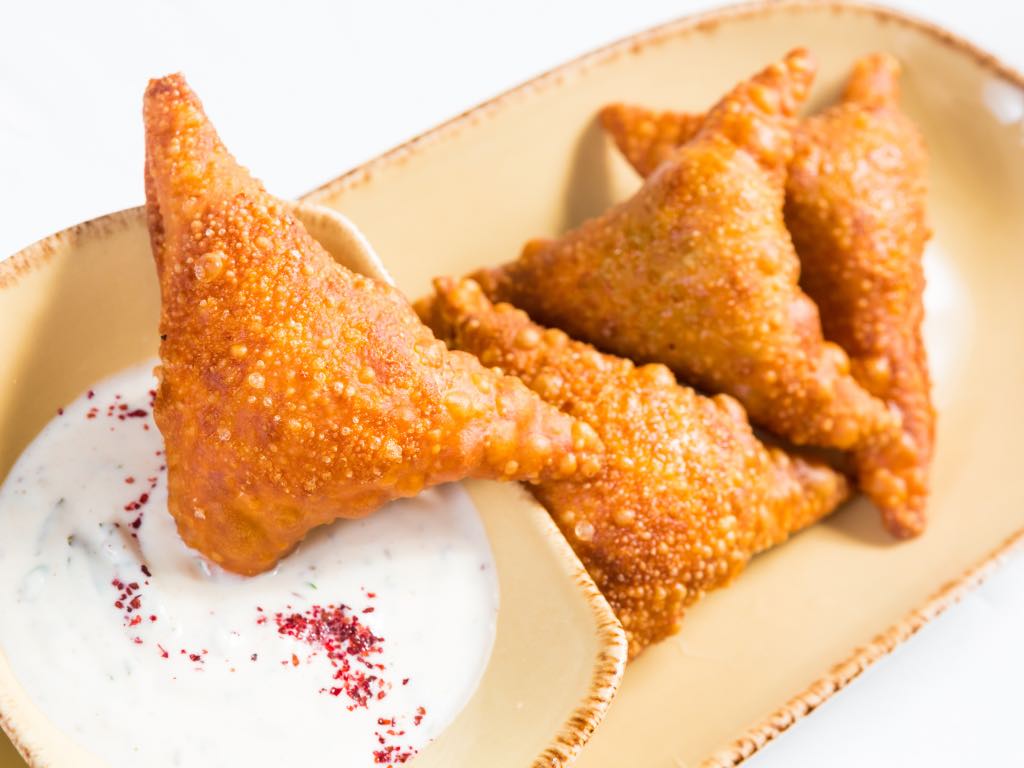
Sambusa vs Samosa: A Delicious Culinary Comparison
|
|
Time to read 5 min
Welcome to One Stop Halal!
Written by: Najma A.
|
|
Time to read 5 min
Culinary traditions are a testament to the rich tapestry of cultures that make up our world. Stuffed pastries have always held a special place among the many global delicacies, offering a tantalizing blend of flavors and textures. Two pastries that have captivated taste buds worldwide are the Sambusa and the Samosa. While they share similar names and fundamental characteristics, these delectable snacks are steeped in distinct cultural histories and flavors. In this blog, we embark on a gastronomic journey to explore the differences and similarities between the Sambusa vs Samosa, celebrating their unique contributions to the world of food.
Samosas are known for their diverse fillings, catering to a range of dietary preferences and taste preferences. The classic vegetarian samosa typically contains spiced potatoes, peas, and aromatic spices like cumin, coriander, and garam masala. Non-vegetarian variations may include minced meat, such as lamb, chicken, or beef, seasoned with a medley of spices.
Sambusas, on the other hand, offers a slightly different take on fillings. While vegetarian samosas with potato and pea fillings are standard, they often incorporate unique regional flavors. In East Africa, you might find sambusas stuffed with ground beef, chicken, or fish, all seasoned with a blend of African spices like berbere, mitmita, or pili.
The choice of fillings can vary by region and personal preference, making sambusas a versatile snack. The blending of cultures and ingredients is evident in the diversity of sambuca fillings across East Africa.
While the basic pastry-making process is similar for both sambusas and samosas, the subtle variations in size and texture can influence the overall eating experience.
In India, samosas are often served with various accompaniments that enhance their flavors. Typical condiments include mint chutney, tamarind chutney, or yogurt-based sauces like raita. These accompaniments balance the spiciness and richness of the samosa filling.
Samosas are also a popular street food, served piping hot with a sprinkling of chaat masala and garnished with chopped onions, cilantro, and sometimes grated cheese. This street-style presentation adds a delightful crunch and freshness to the samosa.
In East Africa, sambusas are frequently enjoyed with spicy chutneys or sauces. These sauces vary widely in flavor and heat, from tangy tomato-based dips to fiery chili sauces. Sambusas are often served as part of a larger meal alongside rice dishes, salads, or other East African specialties.
Samosas have evolved to cater to various tastes and dietary requirements. Some popular variations include:
Sambusas also come in various forms, reflecting the culinary diversity of East Africa. Some notable variations include:
Both sambusas and samosas have transcended their cultural origins and gained popularity worldwide. Many countries cherish them as comfort food, quick snacks, and party appetizers. The adaptability of their fillings and their portable nature make them a favorite among food enthusiasts everywhere.
Welcome to the Home of the Halal Samosas. We carry various samosas and marinated meats that are hard to find elsewhere. We deliver to your doorstep anywhere in the United States within 1-2 business days.
In the culinary world, the Sambusa and the Samosa are iconic examples of how a simple concept—stuffing dough with flavorful ingredients—can lead to two distinct yet equally delicious creations. These pastries have woven themselves into the cultural fabric of their respective regions, serving as symbols of hospitality, celebration, and community.
While the Sambusa and the Samosa may have their differences in fillings, pastry textures, and regional influences, they share a common goal: to delight the senses with a burst of flavors and textures in every bite. Whether you find yourself savoring a crispy, triangular samosa on the bustling streets of Delhi or enjoying a spicy, folded sambusa in a cozy East African cafe, these pastries are bound to leave a lasting impression on your palate. So, the next time you're presented with the choice, be sure to savor the unique culinary journey each of these beloved pastries offers.

© 2025 One Stop Halal, Inc.